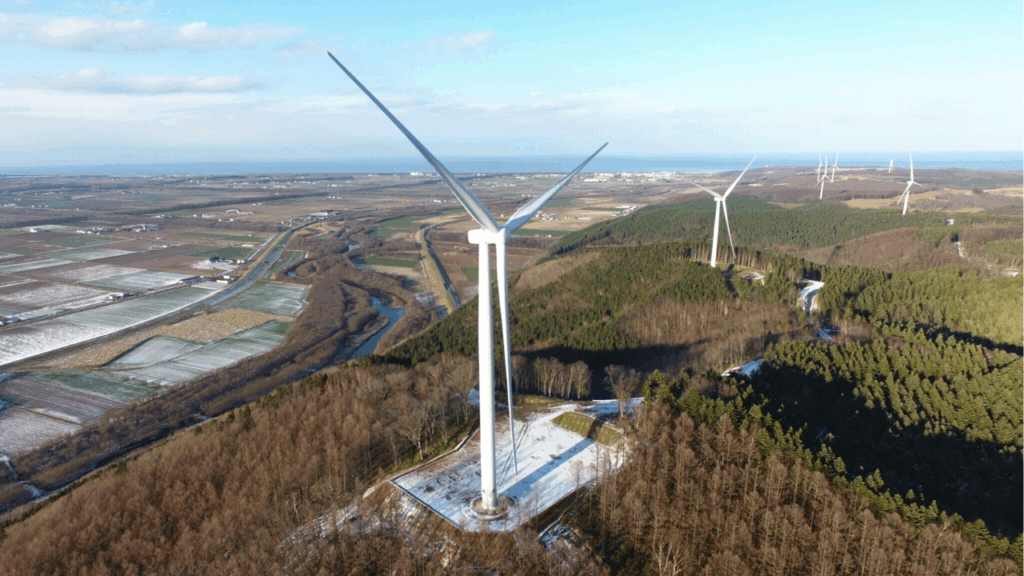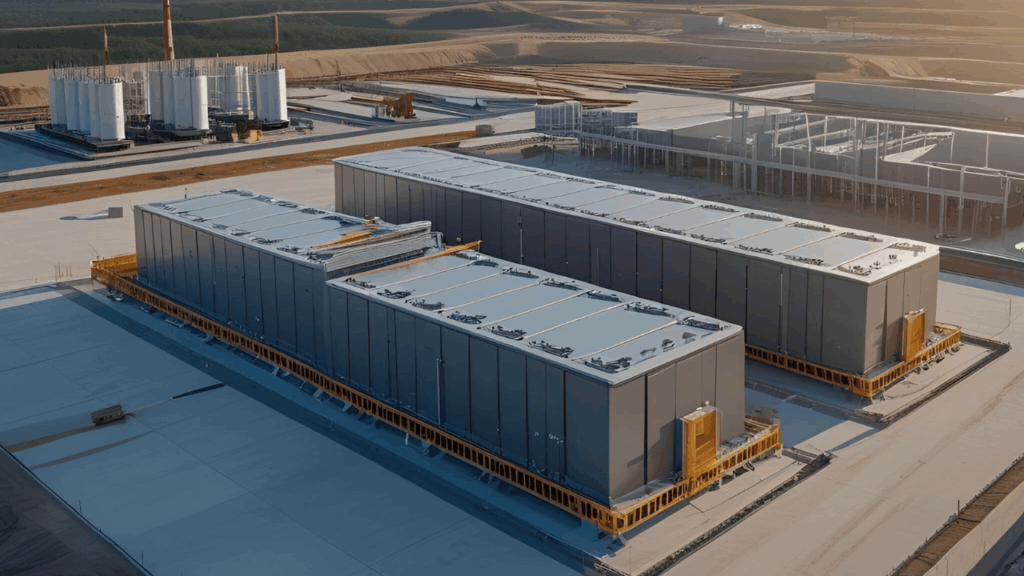Publication date: June 2, 2025 June 2025 Monthly Newsletter: The Latest News In The Japanese Power Market
May 2025 Monthly Newsletter
After a cool pleasant April, the southern Kyushu region quickly saw the onset of the rainy season in early May, and other regions are expected to follow in June as usual – bringing warmer temperatures and pushing up summer cooling demand. From May, electricity charges will include an increase in the renewable energy surcharge, adding to the burden of electricity costs. At the same time, the government has launched a subsidy program to curb rising fuel prices (also with an eye on the Upper House election scheduled this summer), highlighting the difficulty of balancing decarbonization efforts and cost of living priorities when deciding energy policy.
This month’s newsletter opens with a wind farm project that transitioned from Feed-in Tariff (FIT) to Feed-in Premium (FIP), prompting a restructuring of its financing—an interesting move we may witness more often as more projects are expected to be converted into FIP. This is followed by two BESS stories. In the first, we focus on a recent report published by a market research firm on the prospects for the global Battery Energy Storage System (BESS) market, which is expected to continue its rapid growth. In the second piece, we narrow our focus to the specific case of Kansai EPCo’s investment in a massive BESS station to be built in a few years.
Eurus Date Wind Farm Transitions From FIT to FIP Loan Agreement

Eurus Energy Holdings has been operating the Eurus Date Wind Farm (total output: 10 MW) in Date City, Hokkaido, since 2011 under the FIT scheme. The company has now announced that it has agreed to convert its existing loan agreement, arranged by MUFG Bank with participation from three other financial banks, into a project finance agreement based on market-linked revenue, utilizing the FIP scheme.
Under the FIP scheme, cash flows from operational renewable energy power plants can fluctuate significantly depending on market conditions. Therefore, compared to FIT, forming finance contracts under FIP has been considered more challenging. However, they successfully set one up, leveraging Eurus’s more than 30 years of experience in wind power operations and MUFG Bank’s expertise in structuring finance for renewable energy projects.
–
Global BESS Market Expected to Grow Quickly in Coming Decades

Fuji Keizai, a Japanese market research firm, has released the results of its global market survey on the BESS market. According to the report, the global lithium-ion battery market is expected to grow by 8.9% year-on-year in 2024, reaching JPY 20.6481 trillion worldwide. By 2040, the market is projected to expand to JPY 48.8405 trillion, 2.6 times the size of the 2023 market. Lithium-ion batteries are increasingly being adopted worldwide, particularly for electric vehicles and energy storage systems.
Meanwhile, the global market for redox flow batteries—known for their long lifespan and suitability for large-scale storage—is forecasted to grow 5.4 times year-on-year in 2024, reaching JPY 246 billion. Use is increasing in commercial and industrial facilities, power grids, and renewable energy power plants. This market is projected to reach JPY1.6252 trillion by 2040, representing a 35.8-fold increase from 2023.
It is expected that lithium-ion batteries will be used to manage short-cycle renewable output fluctuations, while redox flow batteries will handle planned long-duration charge-discharge operations, leading to a growing differentiation in their applications.
–
Kansai EPCo Invests in 400 MWh BESS Project

Kansai EPCo will build one of Japan’s largest BESS stations on the site of the decommissioned oil-fired “Tanagawa Power Station” in southern Osaka. The new station is scheduled to begin operations in FY 2027. Covering approximately 20,000 square meters, construction is expected to start in this fiscal year. With a planned capacity of around 400 MWh, it will be among the largest single-location BESS stations in the country. The total investment for the project is expected to reach several tens of billions of yen.
The background for this BESS investment includes the growing number of data centers and factories utilizing renewable energy, as well as the increasing frequency of renewable energy curtailments in regions like Kyushu and Kansai since FY2023. According to the Agency for Natural Resources and Energy (ANRE), as of the end of December 2024, battery storage capacity of 170 MW was connected to the power grid, and this figure is projected to expand nearly 50-fold by 2030.
May 2025 Monthly Newsletter: The Latest News In The Japanese Power Market
Thank you for reading.
If you’ve enjoyed this content, subscribe to our complimentary monthly newsletter. Get updates delivered straight to your inbox every month and stay informed about our latest offerings.
Sign up here today.
